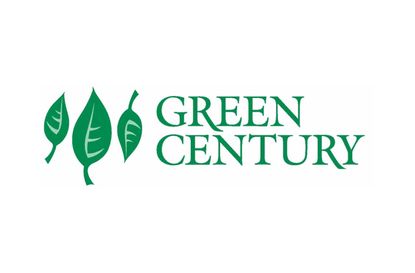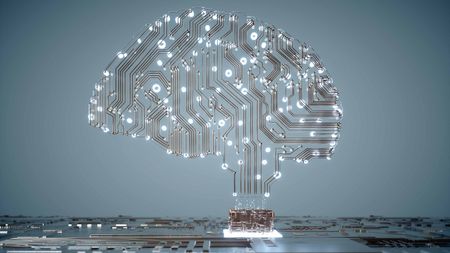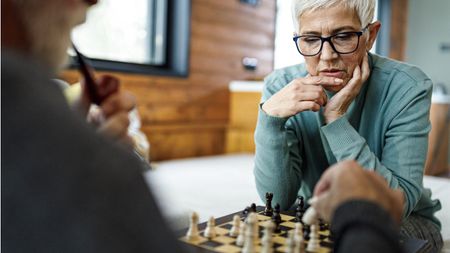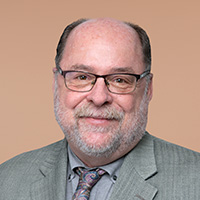Funds That Prosper From Fighting Climate Change
Sustainable investing, sometimes called ESG for the environmental, social and governance criteria that define the investing style, has taken the fund world by storm.

Sustainable investing, sometimes called ESG for the environmental, social and governance criteria that define the investing style, has taken the fund world by storm. But it’s not always possible to isolate the E from the S and G, and strategies vary, too. Some portfolios are defined by what they don’t own—firms that derive most revenues from fossil fuels, say. Others concentrate on innovative firms that are making the planet greener, such as renewable-energy companies.
The 10 mutual funds and exchange-traded funds highlighted below have at least a partial focus on the environment. We’ve organized them into three groups that define different approaches: Thematic ETFs that zero in on climate change exclusively; diversified funds that have a sustainable bent; and actively managed funds that hew to an ESG-oriented investment process and get high marks for environmentally friendly portfolios—whether that’s their stated aim or not. Which tack you take will depend on how passionate you are about battling climate change as well as how much risk you want to take.
Disclaimer
Data is as of January 31. Source for returns: Morningstar Inc.

Climate: Invesco WilderHill Clean Energy ETF
- 1-year return: 42.9%
- 3-year return: 24.3%
- Expense ratio: 0.71%
If alternative energy is your thing, consider Invesco WilderHill Clean Energy ETF (symbol PBW, price $36, expense ratio 0.71%), which invests in firms that focus on green and renewable energy sources—wind, solar, hydro, geothermal and biofuel—and in technologies that facilitate cleaner energy. California-based Bloom Energy is a top-10 holding. It makes solid oxide fuel cells, which produce clean and affordable electricity by way of a chemical reaction.
The fund holds some foreign stocks, too. Nio is a Shanghai-based maker of luxury electric vehicles. Its ES6 model, a sporty SUV, can go more than 315 miles on a full charge.
WilderHill Clean Energy has a horrible 10-year record, but its 9.9% five-year annualized return is promising. Invesco’s Jason Bloom, head of global macro ETF strategy, says the returns are in part a reflection of the sector’s rough early days. “The market was right about the growth in clean energy. What it missed was how difficult it would be in the early stages to make money,” he says. But volatile results are also a sign of the risk that comes with investing in thematic funds. Year to year, the ride can be extremely rough. In 2018, the fund lost 14.1%. The next year, it gained 62.6%.
WilderHill Clean Energy spreads its bets across a range of alternative energies, as opposed to only solar or wind energy, say. That’s good from a long-term perspective. “No one knows which alternative-energy technology will win today, so don’t pick just one,” says Bloom.

Climate: Invesco Solar ETF
- 1-year return: 39.3%
- 3-year return: 24.3%
- Expense ratio: 0.71%
A more focused option from the same family is
Invesco Solar ETF (TAN, $32, 0.71%) focuses on solar power. Its top holding is SolarEdge Technologies, an Israel-based firm that makes panels that harness the sun’s energy.

Climate: First Trust Global Wind Energy
- 1-year return: 18.9%
- 3-year return: 9.6%
- Expense ratio: 0.60%
Another focused fund (on a different source) is First Trust Global Wind Energy (FAN, $15 , 0.60%) invests, as you might guess, in wind energy. Vestas Wind Systems, a Danish maker of wind turbines, is a top holding.

Climate: VanEck Vectors Environmental Services
- 1-year return: 16.0%
- 3-year return: 12.8%
- Expense ratio: 0.55%
VanEck Vectors Environmental Services (EVX, $106, 0.55%) isn’t as single-minded as other ETFs in this group. But dealing with a lot of trash is a recurrent theme. It holds shares in waste collection companies, recycling firms, and soil remediation and environmental consulting services.
Waste Management and Darling Industries are two of the 25 stocks in the portfolio. So are Evoqua Water Technologies, which boosts municipal water quality and industrial firms, and Clean Harbors, which provides, among other things, hazardous-waste disposal services.
The fund has only $38 million in assets—less than we’d like. But it has returned 12.6%, on average, over the past five years, in step with the 12.4% gain in Standard & Poor’s 500-stock index.

Index: IShares MSCI ACWI Low Carbon Target ETF
- 1-year return: 17.3%
- 3-year return: 11.4%
- Expense ratio: 0.20%
IShares MSCI ACWI Low Carbon Target ETF (CRBN, $128, 0.20%) gives greater play to companies with lower carbon emissions. But the strategy is executed with the parent index in mind, in this case the MSCI All Country World index. The fund’s country and sector exposures stay within range of those of the index. The ETF and index have similar top holdings: Apple, Microsoft and Facebook. Its top country exposures are alike, too: U.S., Japan and the U.K.
But not everything is matchy-matchy. Tech, health care and industrial firms figure more prominently in Low Carbon Target than in the index. And energy stocks get less play in the ETF than in the index. All of which goes some way to explain why the fund outpaced the ACWI index over the past one, three and five years.

Index: SPDR S&P 500 Fossil Fuel Reserves Free
- 1-year return: 13.4%
- 3-year return: 7.7%
- Expense ratio: 0.20%
A depressed energy sector has benefited funds that avoid firms with fossil fuel reserves. The 15.1% annualized three-year return of SPDR S&P 500 Fossil Fuel Reserves Free ETF (SPYX, $79, 0.20%) beats that of the S&P 500. The fund essentially holds all of the companies in the S&P 500 except those with fossil fuel or thermal coal reserves. ExxonMobil and Chevron, for instance, are out. But there are inconsistencies. For instance, Phillips 66 is among the ETF’s holdings. Perhaps it doesn’t have the kind of reserves required to merit exclusion from the fund, but it owns 13 refineries with a net capacity of 2.2 million barrels of crude oil a day.

Index: SPDR MSCI EAFE Fossil Fuel Reserves Free
- 1-year return: 22.6 %
- 3-year return: 15.1%
- Expense ratio: 0.20%
Investors seeking international exposure should consider SPDR MSCI EAFE Fossil Fuel Reserves Free ETF (EFAX, $71, 0.30%). It holds stocks in large and midsize companies, none of which own oil, gas or coal reserves that would be used for energy, in 21 developed countries. Over the past three years, the fund has returned 7.7% annualized, in line with the MSCI EAFE broad market index of foreign stocks in developed countries. Plus, it yields 3.0%.

Active Management: Green Century Balanced
- 1-year return: 14.4%
- 3-year return: 9.5%
- Expense ratio: 1.48%
- Green Century Balanced (GCBLX, 1.48%) has a very green pedigree. The fund firm, Green Century Capital Management, and subadviser Trillium Asset Management have invested sustainably for decades. And all profits from Green Century funds—two index funds and Balanced—go to a group of environmental and public health nonprofits.
A trio of managers pick the stocks and bonds for Balanced with a variety of ESG factors in mind. They are active shareholders, too, says comanager Cheryl Smith, often working with companies to improve business practices across a range of issues, from CEO pay to boardroom diversity to deforestation.
Tech companies such as Apple, Microsoft and Amazon.com are top stock holdings. The fund won’t invest in firms that make products that essentially harm or kill people, such as cigarettes or weapons, says Smith. The bond side of the portfolio, about 35% of assets, is filled with green or sustainable bonds and community-impact bonds. One holding, a Starbucks IOU, pays to train farmers in sustainable farming practices in places including Colombia, Ethiopia and Rwanda.
Investors haven’t had to sacrifice returns to do good with this fund. Over the past one-, three-, five- and 10-year periods, Green Balanced has outpaced two-thirds or more of its peers (funds that invest 50% to 70% of assets in stocks).

Active: Artisan Mid Cap
- 1-year return: 14.4%
- 3-year return: 9.5%
- Expense ratio: 1.19%
- Artisan Mid Cap (ARTMX, 1.19%) has an ESG focus, according to investment research firm Morningstar. But the fund doesn’t sell itself that way. It’s just managed by nitty-gritty analysts who pick good companies that happen to give the portfolio a greenish tint.
Four managers look for midsize to large firms with an innovative product or service that fits an emerging customer need. That tilts the fund toward businesses that are big on intellectual property (think medicine and software), rather than businesses that are dependent on natural resources, which helps to explain the fund’s high E marks, says comanager Matt Kamm. For example, Atlassian, a “green tech” firm and a top holding in the fund, builds a cloud-based software system that helps business teams collaborate to create apps, among other things. The fund’s 10-year annualized return, 14.8%, beats the S&P 500 by an average of 0.8 percentage point per year.

Active: Dodge & Cox Stock
- 1-year return: 11.3%
- 3-year return: 9.1%
- Expense ratio: 0.52%
Dodge & Cox Stock, (DODGX, 0.52%)a member of the Kiplinger 25, the list of our favorite no-load funds, is another mutual fund that doesn’t have to be labeled green to be environmentally friendly. Based on the good environmental qualities of the stocks it holds, the fund earns an exceptionally high E score from Morningstar, compared with its peers. The score puts the fund among the top 5% of all funds that invest in large value-priced companies, according to Morningstar.
Ten comanagers consider ESG measures in each phase of their investment research and decision-making processes. But rather than having hard-and-fast rules, they “assess ESG factors, among many others, that may be a key opportunity or risk for a company,” says Bryan Cameron, the firm’s director of research. The managers might, for example, invest in a company that has a significant ESG challenge if they believe the stock is depressed as a result of the issue and the company is taking positive steps to address it.
Value stocks have trailed the broad market in recent years. But Stock’s 10-year annualized return of 12.5% is impressive on an absolute basis, even if it lags the S&P 500 by an average of 1.5 percentage points per year.
Get Kiplinger Today newsletter — free
Profit and prosper with the best of Kiplinger's advice on investing, taxes, retirement, personal finance and much more. Delivered daily. Enter your email in the box and click Sign Me Up.

Nellie joined Kiplinger in August 2011 after a seven-year stint in Hong Kong. There, she worked for the Wall Street Journal Asia, where as lifestyle editor, she launched and edited Scene Asia, an online guide to food, wine, entertainment and the arts in Asia. Prior to that, she was an editor at Weekend Journal, the Friday lifestyle section of the Wall Street Journal Asia. Kiplinger isn't Nellie's first foray into personal finance: She has also worked at SmartMoney (rising from fact-checker to senior writer), and she was a senior editor at Money.
-
 Tariff Turmoil Overshadows Strong March Jobs Report: What the Experts Are Saying
Tariff Turmoil Overshadows Strong March Jobs Report: What the Experts Are SayingThe March jobs report came in stronger than expected, but the good news is being overshadowed by President Trump's trade war.
By Karee Venema Published
-
 Retirees: Is Your Local Bank Closing? Four Ways to Cope
Retirees: Is Your Local Bank Closing? Four Ways to CopeBank branches are closing across the country. If you are among the retirees who prefer to bank in person, you have some options.
By Donna Fuscaldo Published
-
 The Cheapest Places To Retire in the US
The Cheapest Places To Retire in the USWhen you're trying to balance a fixed income with an enjoyable retirement, cost of living is a crucial factor to consider.
By Stacy Rapacon Published
-
 Can Stocks Picked by Artificial Intelligence Beat the Market? 3 Stocks to Watch
Can Stocks Picked by Artificial Intelligence Beat the Market? 3 Stocks to Watchstocks An artificial intelligence stock-picking platform identifying high-potential equities has been sharp in the past. Here are three of its top stocks to watch over the next few months.
By Dan Burrows Last updated
-
 5 Stocks to Sell or Avoid Now
5 Stocks to Sell or Avoid Nowstocks to sell In a difficult market like this, weak positions can get even weaker. Wall Street analysts believe these five stocks should be near the front of your sell list.
By Dan Burrows Published
-
 Best Stocks for Rising Interest Rates
Best Stocks for Rising Interest Ratesstocks The Federal Reserve has been aggressive in its rate hiking, and there's a chance it's not done yet. Here are eight of the best stocks for rising interest rates.
By Jeff Reeves Last updated
-
 The 5 Safest Vanguard Funds to Own in a Volatile Market
The 5 Safest Vanguard Funds to Own in a Volatile Marketrecession The safest Vanguard funds can help prepare investors for continued market tumult, but without high fees.
By Kyle Woodley Last updated
-
 The 5 Best Inflation-Proof Stocks
The 5 Best Inflation-Proof Stocksstocks Higher prices have been a major headache for investors, but these best inflation-proof stocks could help ease the impact.
By Louis Navellier Published
-
 5 of the Best Preferred Stock ETFs for High and Stable Dividends
5 of the Best Preferred Stock ETFs for High and Stable DividendsETFs The best preferred stock ETFs allow you to reduce your risk by investing in baskets of preferred stocks.
By Kyle Woodley Last updated
-
 What Happens When the Retirement Honeymoon Phase Is Over?
What Happens When the Retirement Honeymoon Phase Is Over?In the early days, all is fun and exciting, but after a while, it may seem to some like they’ve lost as much as they’ve gained. What then?
By T. Eric Reich, CIMA®, CFP®, CLU®, ChFC® Published


